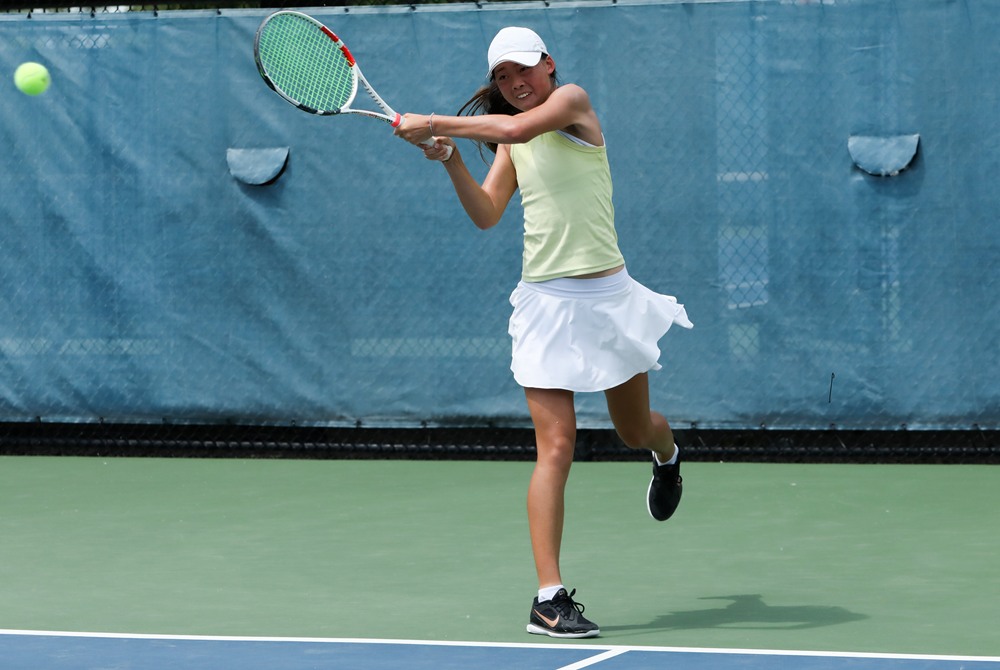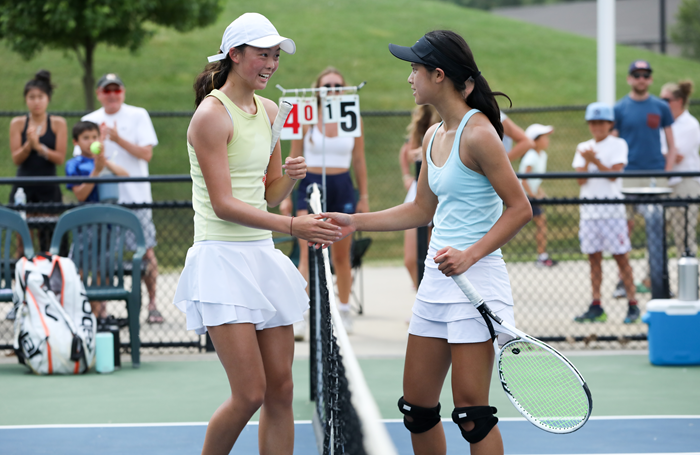
Casting Lines for Future Tournaments
August 12, 2016
By Jack Roberts
MHSAA Executive Director
The MHSAA is best known to the public for the tournaments it conducts to conclude the fall, winter and spring seasons each school year.
These tournaments, the first and largest program of the MHSAA, have survived the Vietnam War, the Korean conflict and two World Wars. They have survived the technology bubble, the housing collapse, the energy crisis and the Great Depression.
MHSAA tournaments existed at the dawn of aviation and at the time of our nation’s lunar landing. Popes, presidents and governors have changed and changed again and again, and MHSAA tournaments roll on year after year.
But the sense of tradition and permanence and inevitability of MHSAA tournaments doesn’t dissuade us from asking questions about our tournaments, even some of the most basic questions. Here are two.
Question #1
I have long been and will always be an advocate for a Ryder Cup format for the MHSAA Golf Finals, and a team tennis approach to the MHSAA Tennis Finals; but 90 years of tradition is hard to overcome. Might this be a more exciting format? Could it be co-ed? Could it reverse the decline in boys tennis participation, and increase girls golf participation? Wouldn’t it be fun to try?
Periodically, the International Olympic Committee requires each of the designated Olympic sports to defend its status, to state its case why the sport should remain a part of the Olympic program. Then, after a series or votes that retain one sport at a time, the IOC drops the sport that makes the weakest case. It does so to make room for one of the previously unlisted sports that makes the best case for inclusion.
This would appear to keep the existing Olympic sports on their toes, and to keep the Olympic movement fresh and reflective of modern trends in sports.
While I would not enjoy the controversy, I can see the potential for some positive results if the MHSAA were to invoke the same policy for determining the 14 tournaments it will provide for girls and the 14 for boys.
This might cause us to consider more deeply what a high school sport should look like, or at least what an MHSAA tournament sport should stand for.
On the one hand, we might be inclined to drop tournaments for those sports that involve mostly non-faculty coaches and non-school venues, or require cooperative programs to generate enough participants to support a team, or resort almost entirely to non-school funding, or cater to individuals more than teams.
Or perhaps this process would cause policymakers to forget traditional thinking and ask: “In this day and age, should we shake off traditional notions of sport and consider more where modern kids are coming from?” That might mean fewer team sports and more individual sports, more “extreme” sports like snowboarding and skateboarding, and more lifetime sports, meaning not just golf and tennis and running sports, but also fishing and even shooting sports.
Currently, MHSAA policy states that the MHSAA will consider sponsorship of a tournament series for any sport which 64 member schools conduct on an interscholastic basis as a result of action by the governing boards of those schools.
Should the only question be how many schools sponsor a sport, or must an activity also have certain qualities and/or avoid certain “defects?” What should an MHSAA tournament sport look like and stand for?
Question #2
Bristling from criticism that his association is a money-grabbing exploiter of children, my counterpart in another state said, “If we were running our programs just to make money, we would do very many things very differently.” I knew exactly what he meant.
Because we care about the health and welfare of students, because we mean what we say that the athletic program needs to maximize the ways it enhances the school experience while minimizing academic conflicts, and because we try to model our claim that no sport is a minor sport when it comes to its potential to teach young people life lessons, we operate our programs in ways that make promoters, marketers and business entrepreneurs laugh, cry or cringe.
If money were the only object, we would seed and select sites to assure the teams that attracted the most spectators had the best chance to advance in our tournaments, regardless of the travel for any team or its fan base. If money were the only object, we would never schedule two tournaments to overlap and compete for public attention, much less tolerate three or four overlapping events. If money were the only object, we would allow signage like NASCAR events and promotions like minor league baseball games.
Those approaches to event sponsorship may not be all wrong; they’re just not all right for us. And we will live with the consequences of our belief system.
During a typical school year, more than 20 percent of the MHSAA’s 2,097 District, Regional and Final tournaments lose money. Not a single site in golf, skiing or tennis makes a single penny. In no sport did every District, Regional and Final site have revenue in excess of direct expenses.
In fact, in only three sports – boys and girls basketball and football – is revenue so much greater than direct expenses overall that it helps to pay for all the other tournaments in which the MHSAA invests.
That’s right: invests. When we present our budget to our board, we talk about the MHSAA’s investment in providing tournament opportunities in all those sports and all those places that cannot sustain the cost of those events on their own. How much is this investment worth to students, schools and society?
These two are core questions that require our focus far in advance of talk about scheduling, site selection, seeding and the myriad matters that too often hijack our time and attention.

Adams' Fu Hoping to Write Championship Headline After Repeat Finalist Finishes
By
Keith Dunlap
Special for MHSAA.com
May 23, 2024
ROCHESTER HILLS — An editor for her school newspaper the last two years, Nicole Fu is one who loves to tell good stories and write good headlines.
 A junior at Adams, Fu enjoys getting to know people around the school and giving them a moment in the sun, so to speak.
A junior at Adams, Fu enjoys getting to know people around the school and giving them a moment in the sun, so to speak.
“I love being able to talk with so many people and learn the stories behind their accomplishments,” Fu said.
It’s ironic, because come the end of next Saturday’s Lower Peninsula Division 1 Girls Tennis Finals, Fu hopes professional media outlets around the state will talk about her own story of accomplishment, possibly with headlines such as “Redemption Feels Sweet for Fu” or “Third Time is Charm for Adams Tennis Star.”
Both the last two years, Fu has advanced to the championship match at No. 1 singles in Division 1.
But while quite an accomplishment to do so as a freshman and sophomore, she also left somewhat unsatisfied, losing in 2022 to Reese Miller of Ann Arbor Pioneer (6-1, 6-1) and last spring to Sari Woo of Ann Arbor Skyline (6-3, 6-4).
“Being in the final both my freshman and sophomore years has shown me that I have what it takes to win a state championship even when it gets tough,” Fu said. “Last year especially has shown me that I’m not far from the title, and staying strong both mentally and physically is going to be crucial to hopefully winning a state title.”
No doubt, Fu should be one of the top contenders, if not the favorite.
She enters with an 18-0 record and has brilliantly handled opponents attempting to give her their best performances.
“Her ability to handle the pressure has improved a lot,” Adams head coach Greg Burks said. “She has matured as a top-level player and competes as well as any player I’ve ever had.”
 Fu actually said she got her start in tennis a little later than most. After dabbling in soccer and swimming, Fu started playing tennis at age 10 when one of her mom’s co-workers gave her a foam ball and a kids racquet.
Fu actually said she got her start in tennis a little later than most. After dabbling in soccer and swimming, Fu started playing tennis at age 10 when one of her mom’s co-workers gave her a foam ball and a kids racquet.
“Then I started hitting against our living room wall, and one day my mom asked if I wanted to take an actual tennis lesson,” Fu said.
From there, Fu started playing in tournaments, and the tennis bug bit her.
“I really loved competing in matches, so I didn’t stop and it ended up being very rewarding,” she said.
Fu also has an accomplished hitting partner in twin sister Katie, who lost in the championship match at No. 2 singles last year.
“She’s always a great hitting partner, and it’s really nice to have someone who understands the sport and what it takes to balance that out with everything else,” Nicole Fu said. “She’s basically my second brain too, so having her around during the season is super fun and helpful for keeping me in check.”
Fu has a collegiate future in the sport, having committed in November to play tennis at the U.S. Naval Academy.
“Obviously the education is extraordinary, and attending a service academy builds your character both physically and mentally and sets you up to make an impact on the nation,” Fu said.
When it comes to next week’s MHSAA Tournament, Fu obviously is aiming to make another impact at the championship level – but this time finish the quest she fell short of the last two years.
“This year as a back-to-back finalist and a strong favorite has put a lot of pressure on me to win my matches,” she said. “So there’s definitely a lot of expectations for this season, and managing that was a little bit tough in the beginning of the season. But over time I’ve kind of learned to embrace it, and it’s given me more confidence in my matches knowing I’m the player people are aiming to beat.”
 Keith Dunlap has served in Detroit-area sports media for more than two decades, including as a sportswriter at the Oakland Press from 2001-16 primarily covering high school sports but also college and professional teams. His bylines also have appeared in USA Today, the Washington Post, the Detroit Free Press, the Houston Chronicle and the Boston Globe. He served as the administrator for the Oakland Activities Association’s website from 2017-2020. Contact him at [email protected] with story ideas for Oakland, Macomb and Wayne counties.
Keith Dunlap has served in Detroit-area sports media for more than two decades, including as a sportswriter at the Oakland Press from 2001-16 primarily covering high school sports but also college and professional teams. His bylines also have appeared in USA Today, the Washington Post, the Detroit Free Press, the Houston Chronicle and the Boston Globe. He served as the administrator for the Oakland Activities Association’s website from 2017-2020. Contact him at [email protected] with story ideas for Oakland, Macomb and Wayne counties.
PHOTOS (Top) Rochester Adams' Nicole Fu returns a volley during last season's No. 1 singles championship match at the Lower Peninsula Division 1 Finals. (Middle) Fu, left, congratulates Ann Arbor Skyline's Sari Woo after their match. (Click for more from High School Sports Scene.)

